Two weeks ago I spend a gorgeous week with my friend Lilla Turi and her husband in the their beautiful home in Budapest. I had all the best intentions to have this post done and scheduled so I could put it up within my regular posting routine (every two weeks) but after my previous blog on Downtime & Discovery, I decided to take my own advice and rest up. I wanted to be fully in the moment with my friend and enjoy her company after not seeing her IRL since we both moved home from Cambrigde in 2021. I had the best week catching up, binging shows together (Good Omens 2 and Bad Sisters) and eating as many chimney cakes I could get my hands on. It was so nice to see her again and talk about all things illustration, picture books and what books we had been reading.
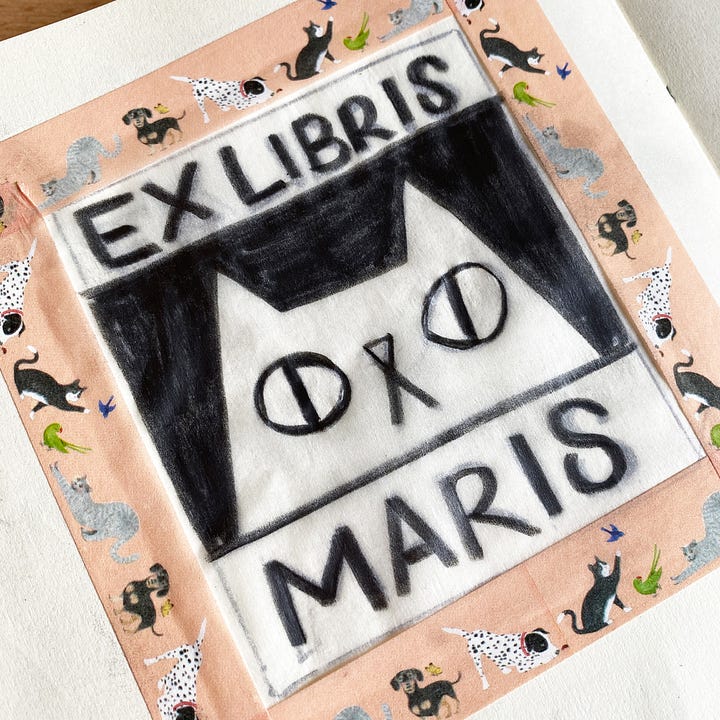
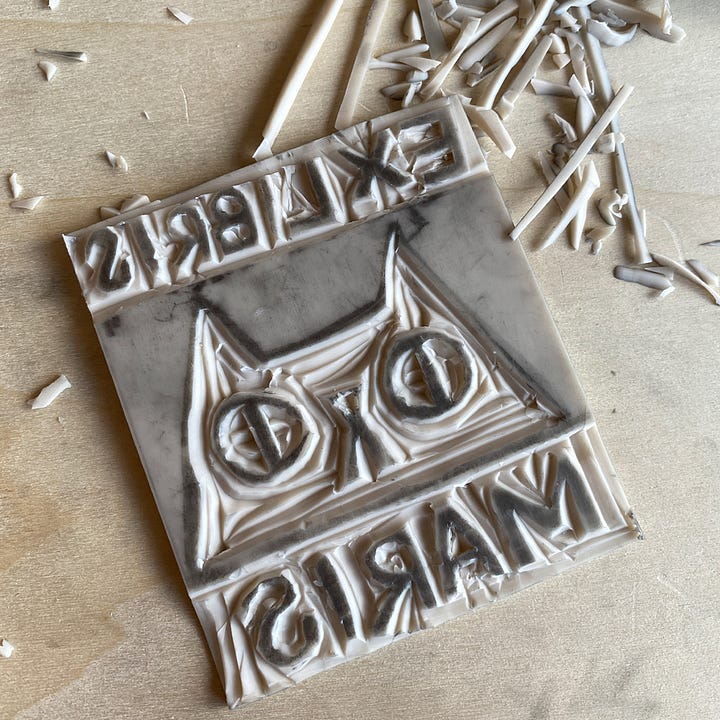
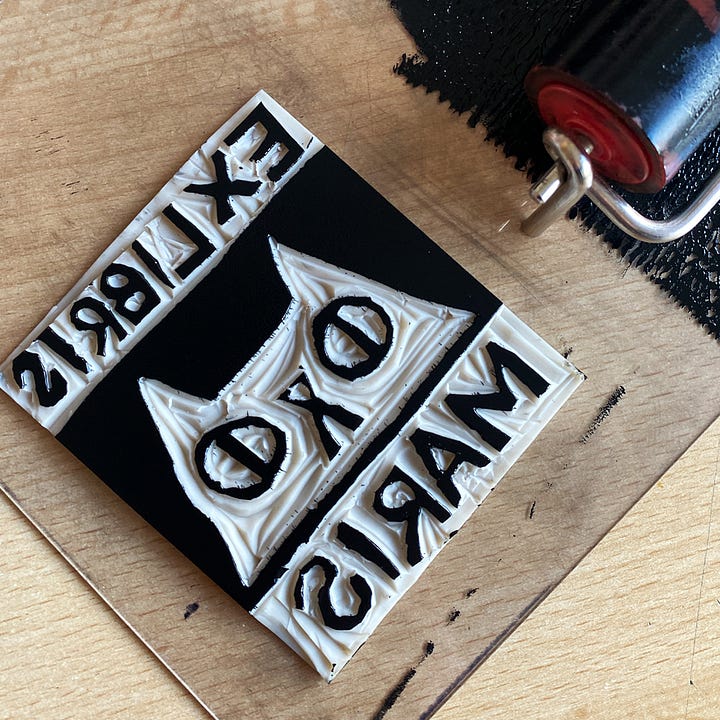
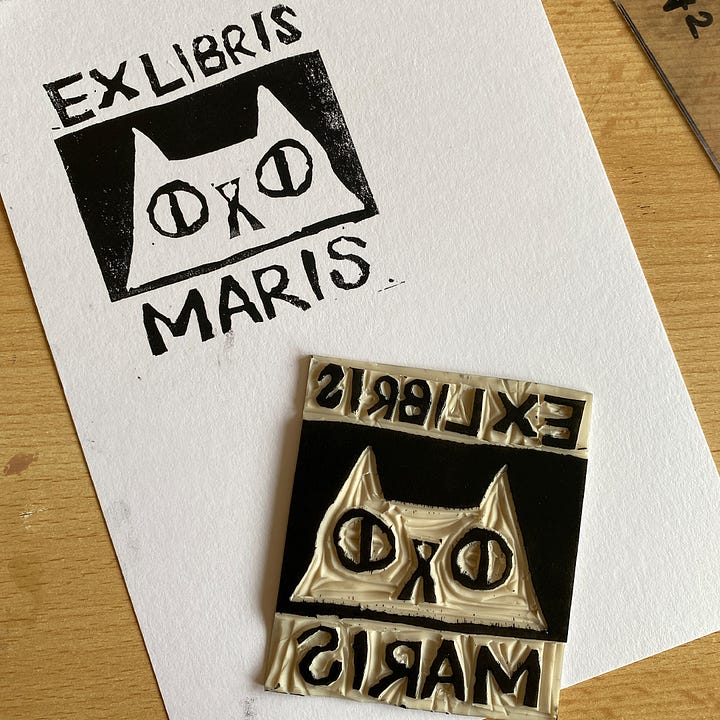
People have been borrowing books and forgetting to return them since the mid-fifteenth century.
Source
This week we’re diving into the wonderful world of books, specifically into the Ex Libris, or bookplate. In Latin ‘Ex Libris’ means ‘from the books of’ and they were created to identify the owner of a book. After the invention of the printing press, books became more easily available and people, mostly the aristocracy, started to curate their own libraries. In the 20th century when books became even more widespread, the bookplate or Ex Libris became an art form in its own right. You could commission an artist to design a personalised bookplate for you, or you could order one directly from a catalog. Many artists have since created an Ex Libris of their own and in this post I want to share some of my personal favourites (unsurprisingly very cat heavy). One of the earliest known bookplates is this hedgehog from the 15th century.
Seeing Tove Janssons’ glorious Ex Libris with the slogan ‘La bora et amare’ in the book ‘Tove, Work and Love’ by Tuula Karjalainen, made me want to create an Ex Libris of my own. It’s so beautifully detailed that I still find new things in it every time I look at it, like the wonderful grumpy lion in the top left corner. Her previous Ex Libris designs are more minimal but just as fascinating.
Below are some more marvellous bookplates by different artists. The first image is Escher’s take on the Dutch (and English) saying ‘being a bookworm’.
Art-Exlibris is an amazing website where you can find loads more incredible bookplates. You can search on time period, technique and search words. Let me know if you uncover any hidden gems in the comments.
As always, thank you for being here. See you next week when we’ll dive further into the magic of books and reading as I walk you through the behind the scenes of my folktale week process.
X Maris
Links:





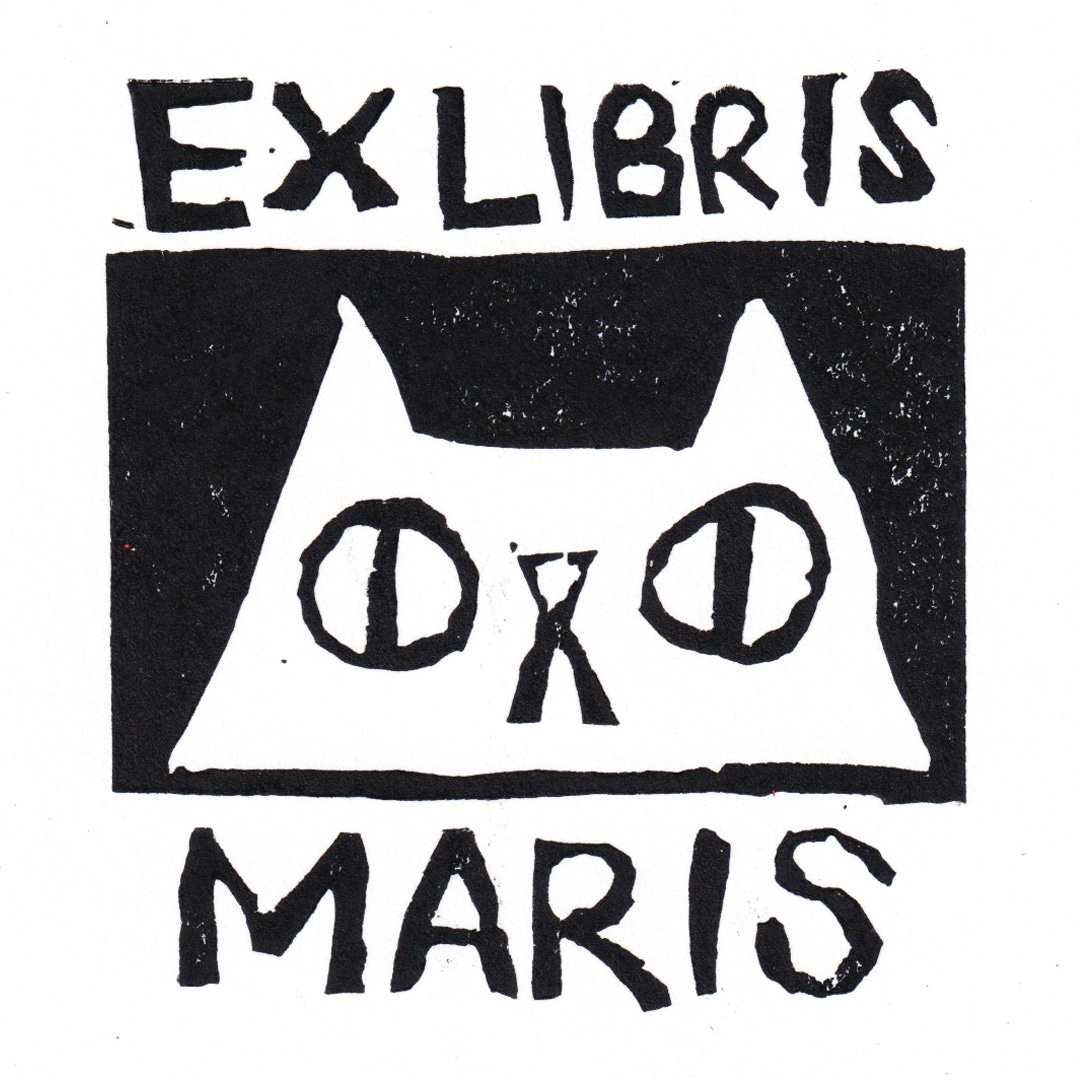


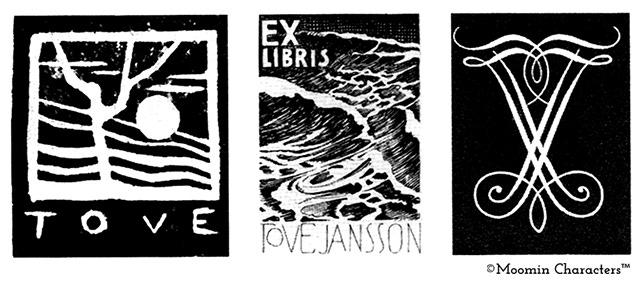
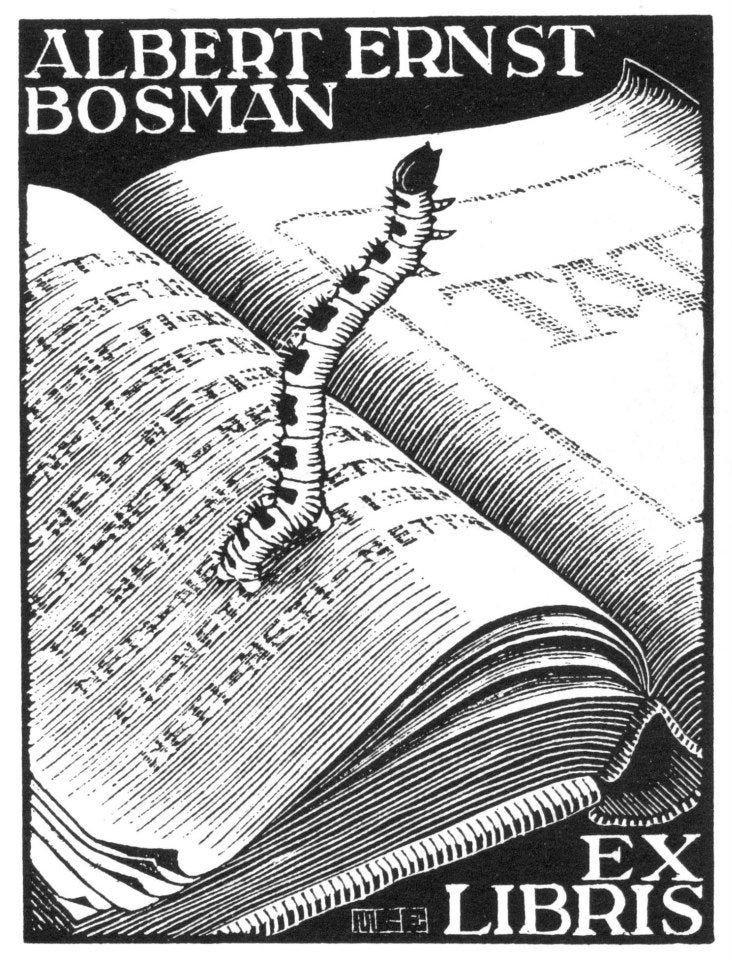

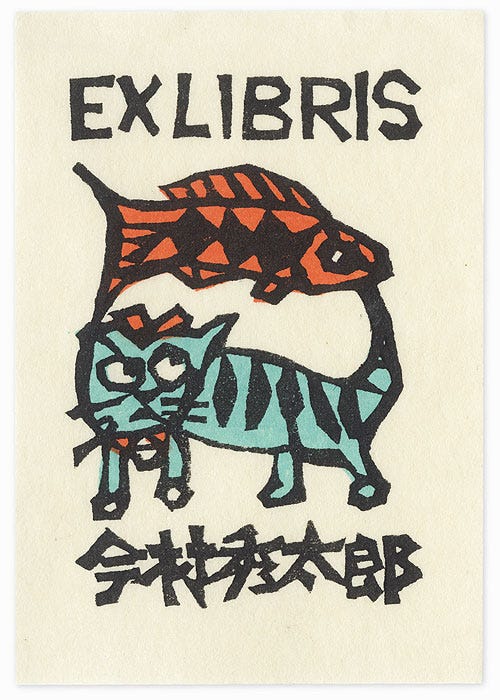
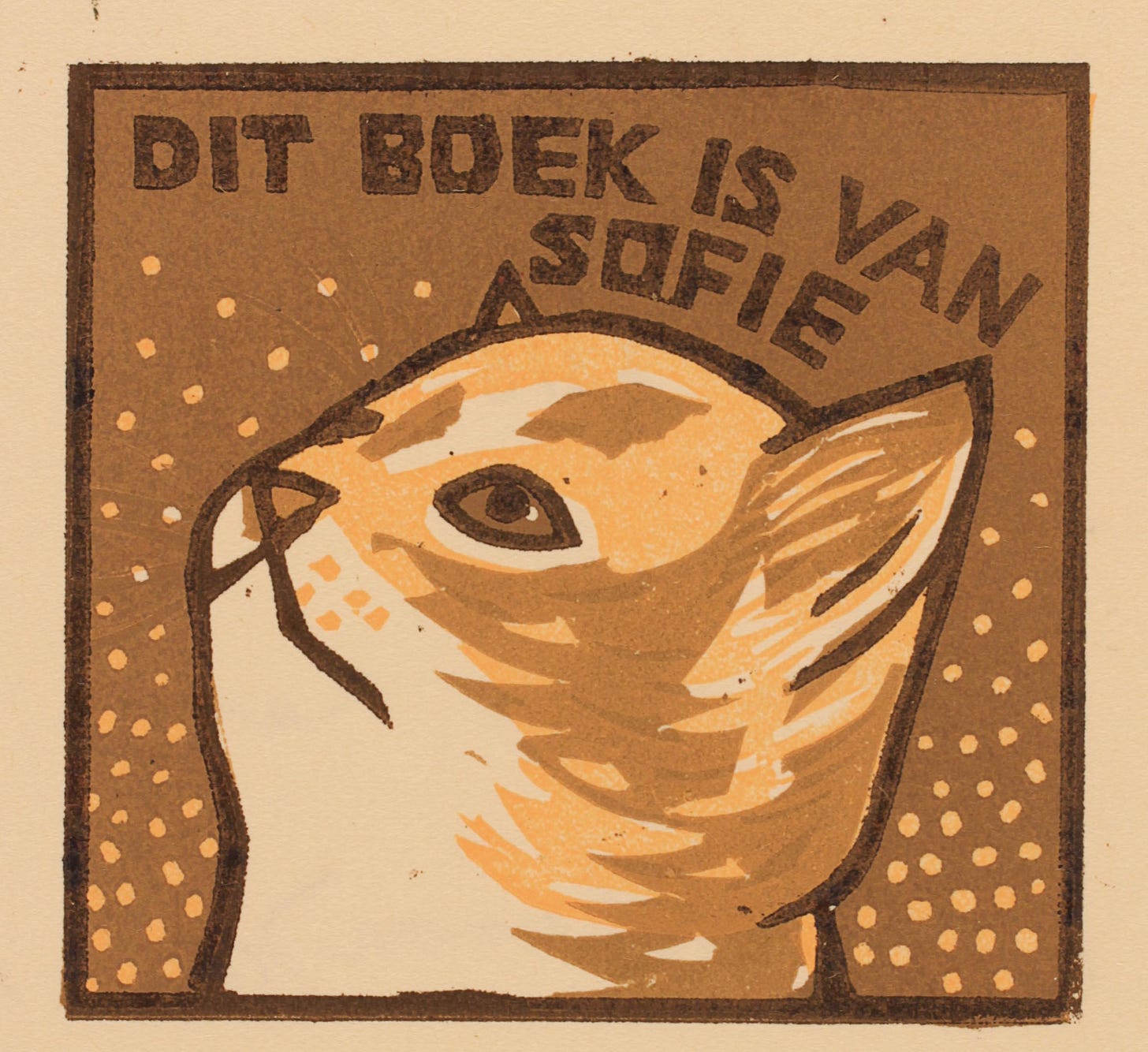
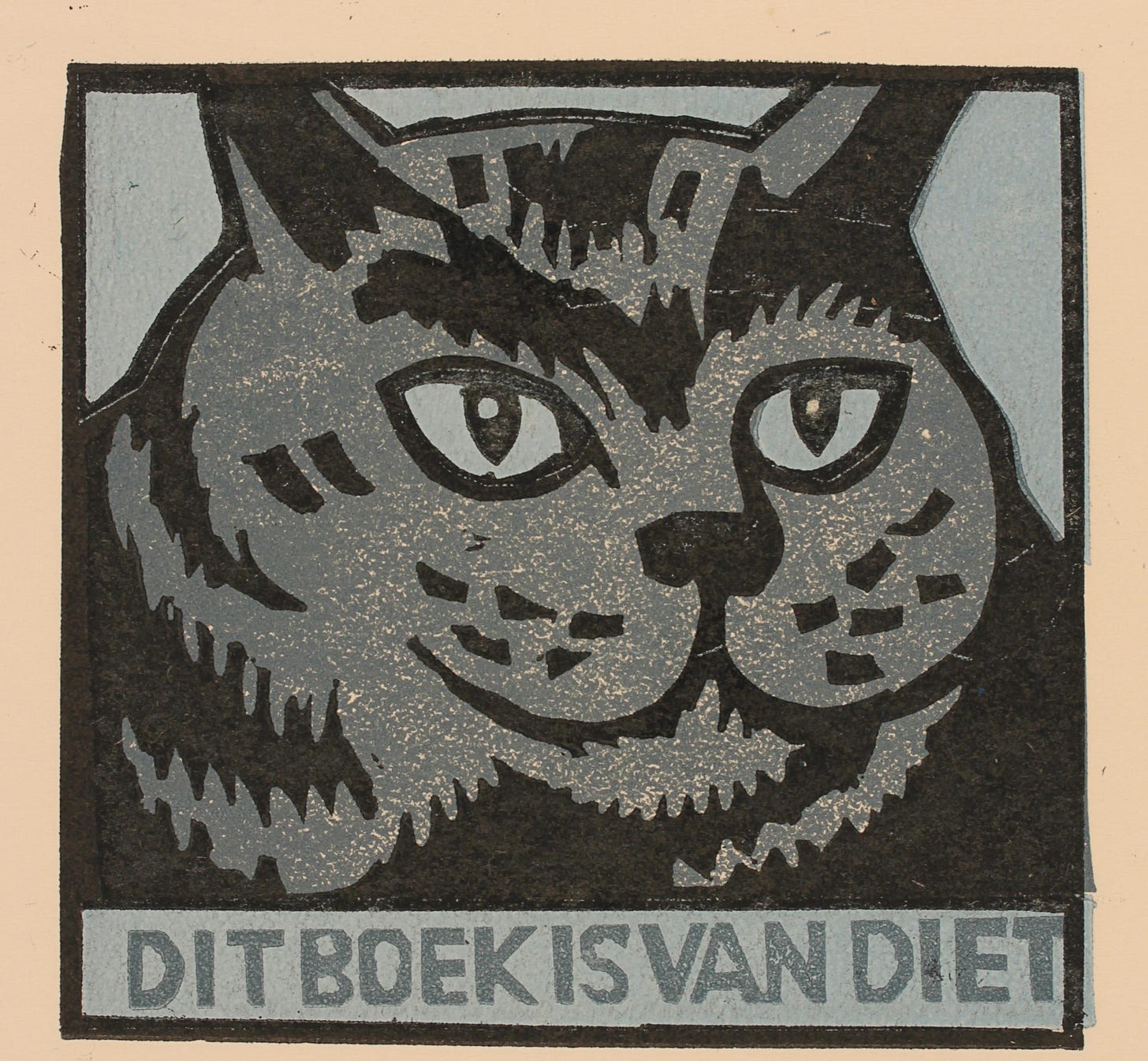
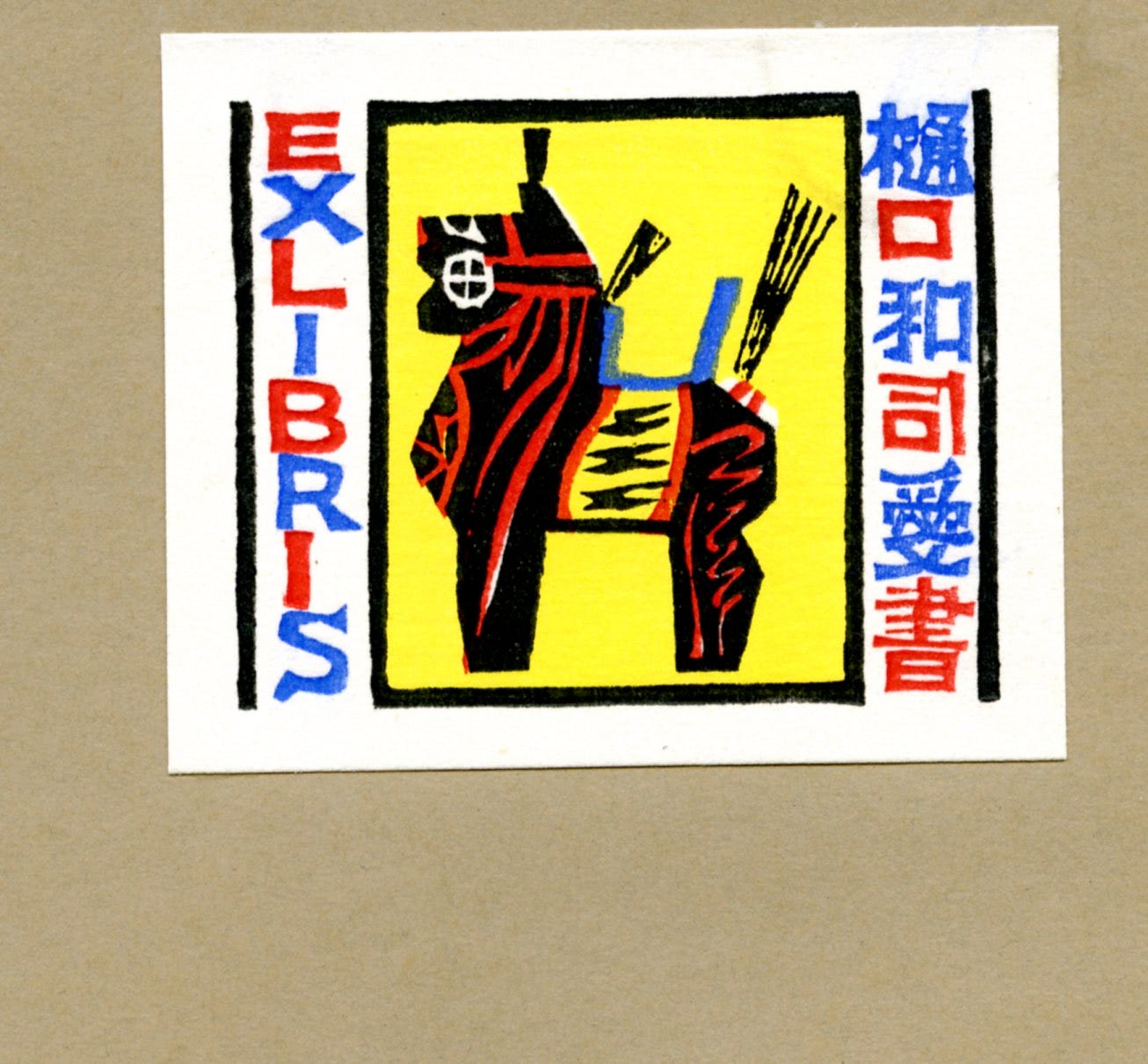

Yours is wonderful - now I’m inspired to make my own! The Hungarian Museum of Applied Arts also has an excellent collection online.
So good! I never really knew about bookplates but I love them . And you made a beautiful one Maris! Gorgeous.